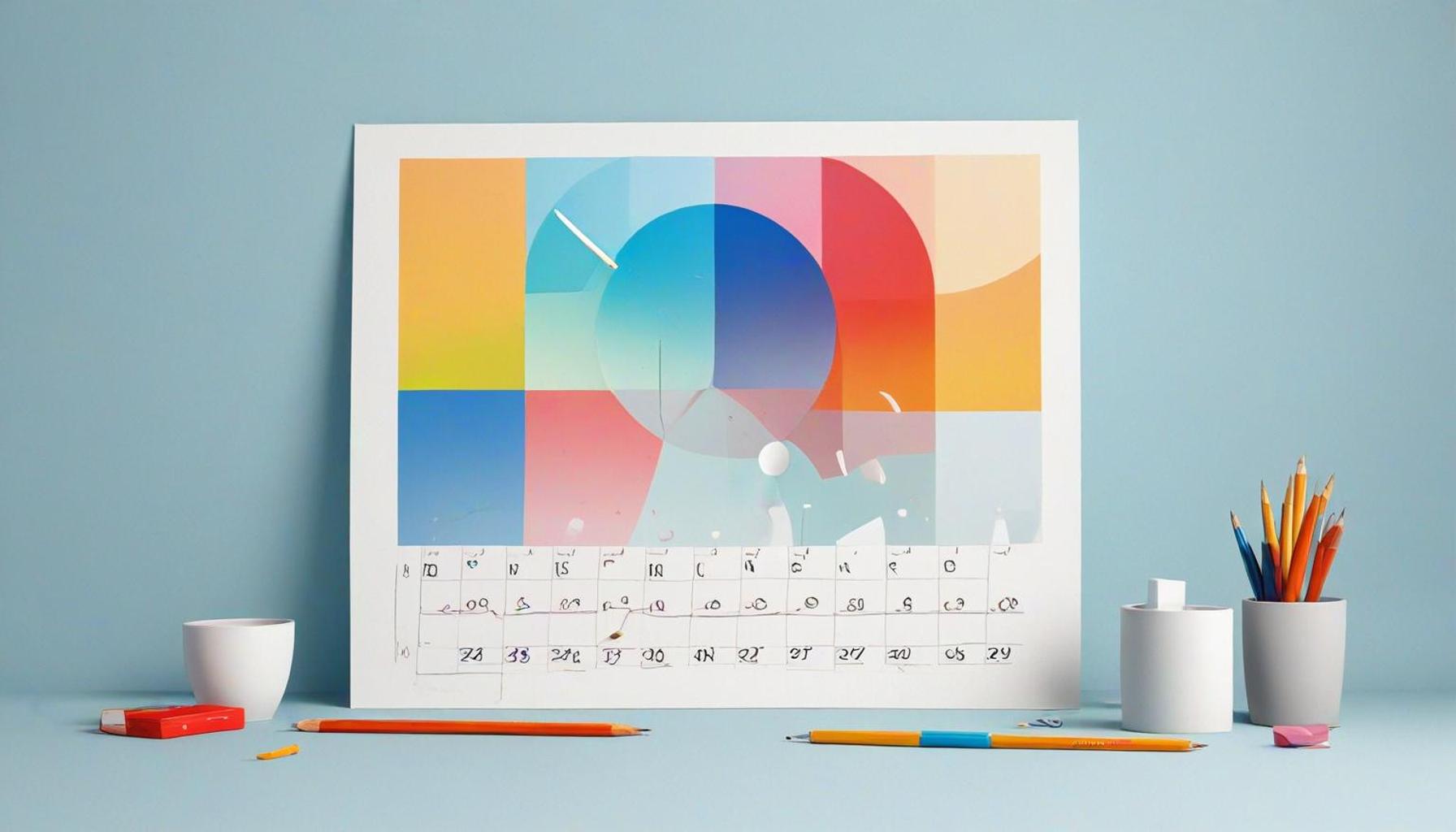Deconstructing the Agenda: Minimalist Techniques to Organize Your Day

Understanding Your Daily Agenda
Every day, countless individuals grapple with overwhelming to-do lists packed with tasks that seem never-ending. The chaos of modern life can lead to feelings of anxiety and disorganization, making it challenging to focus on what truly matters. However, adopting minimalist techniques can transform the way you approach your day.
The Power of Minimalism
Minimalism emphasizes simplicity and intentionality, enabling you to prioritize essential activities over superfluous ones. In practice, this means focusing on what truly drives you towards your goals. Here are some key features of this approach:
- Declutter Your Schedule: This step involves reviewing your ongoing commitments and eliminating unnecessary tasks that don’t contribute to your primary objectives. For example, if attending weekly meetings consistently yields no actionable outcomes, consider alternative methods of communication, such as emails or reports. This can free up valuable time.
- Focus on Outcomes: Instead of trying to conquer an expansive list of daily tasks, identify the 1-3 key objectives that will yield the most significant results. This might mean prioritizing a project deadline over routine email checks or dedicating time to develop a new skill instead of mindless browsing on social media. By focusing on outcomes, you can achieve a greater sense of accomplishment.
- Time Blocking: Allocate specific time slots for focused work on prioritized tasks. For instance, if you know that you’re most productive in the morning, use that time to tackle challenging projects. Tools like calendars allow you to create structured blocks of time where interruptions are minimized, allowing for sustained concentration.
Why It Matters
In a society where busyness is often glorified, embracing a minimalist mindset can lead to improved productivity and reduced stress. Studies show that individuals who streamline their daily agendas report higher satisfaction in both personal and professional spheres. For example, research published in the Journal of Occupational Health Psychology illustrates a clear correlation between minimalistic approaches and enhanced mental well-being among workers. By applying these strategies to your life, you can create a healthier work-life balance.
As you navigate your day, consider how these techniques can help you declutter not just your schedule but also your mind. In doing so, you may find room for creative thinking, more meaningful relationships, and a deepened focus on what matters most in your life. The potential for increased happiness and reduced anxiety is compelling; therefore, it is worth examining how minimalism impacts your daily routines and overall quality of life.
DISCOVER MORE: Click here for space optimization tips

Practical Steps to Implement Minimalism in Your Daily Routine
While the principles of minimalism may sound appealing, the challenge often lies in applying them effectively to your day-to-day life. Transitioning from a chaotic schedule to a streamlined agenda requires actionable steps that you can integrate seamlessly into your routine. Let’s explore some practical techniques to help you embrace minimalism and organize your day more efficiently.
1. The Art of Prioritization
Prioritization is at the heart of minimalist techniques. Understanding which tasks to prioritize is essential in creating a focused agenda. Start by conducting a SWOT analysis of your daily responsibilities. Here’s how to break it down:
- Strengths: Identify your core competencies. What are you good at? Prioritize tasks that align with those strengths, allowing you to execute them more efficiently.
- Weaknesses: Recognize areas where you struggle. Delegate or simplify these tasks to avoid unnecessary stress and frustration.
- Opportunities: Assess upcoming projects or chances for personal development. Focus on tasks that can propel your career or personal growth forward.
- Threats: Identify distractions or obligations that detract from your essential tasks. Work to minimize these interruptions through strategic planning.
By creating this inventory, you can clearly understand what demands your energy and attention, allowing you to better allocate your time.
2. Setting Realistic Goals
Incorporating SMART goals—Specific, Measurable, Achievable, Relevant, and Time-bound—into your routine can enhance your focus and motivation. Instead of vague tasks like “work on project,” aim for something more precise, such as “complete the first draft of the project report by 3 PM today.” By setting clear objectives, you create a roadmap that guides your actions throughout the day. This clarity not only heightens productivity but also fosters an environment where achieving goals becomes tenable.
3. Easing into a Minimalist Day
Transitioning to a minimalist approach does not have to happen overnight. Start by implementing a few minor changes to your routine:
- Morning Routine: Design your morning routine to incorporate quick, complementary tasks that set a positive tone for the day, such as meditation or a brief workout.
- Limit Daily Tasks: Commit to a maximum of five tasks per day. This restriction allows you to focus on completing essential tasks without the overwhelm.
- Embrace the Power of ‘No’: Learn to say no to commitments that do not align with your objectives. This step can be crucial in maintaining a clutter-free agenda.
By gradually easing into these minimalist techniques, you create a culture of clarity in your daily routine. The benefits, which include reduced stress levels and a more profound sense of accomplishment, will soon become evident. As these changes take root, do not hesitate to revisit your strategies and refine them, keeping your focus on continual improvement and simplicity.
| Category | Advantages |
|---|---|
| Time Management | Focused tasks promote efficiency, reducing the overwhelm of multitasking. |
| Mental Clarity | Simplified to-do lists enhance concentration and engagement with less mental clutter. |
| Physical Space | Decluttering your workspace can lead to higher productivity and a sense of calm. |
| Prioritization | Identifying essential tasks helps in aligning daily efforts with long-term goals. |
In today’s fast-paced world, it’s crucial to adopt minimalist techniques inspired by the concept of deconstructing the agenda. By grasping the principles of minimalist organization, individuals can gain control over their day-to-day scheduling, transforming chaos into clarity. One tangible advantage of implementing a focused time management strategy is that it enhances productivity while reducing the stress associated with overwhelming to-do lists.Moreover, achieving mental clarity is deeply intertwined with a simplified approach to your agenda. With fewer tasks vying for your attention, concentration improves, allowing for a more engaged and mindful work process. Furthermore, the physical benefits of decluttering one’s workspace cannot be overlooked; it is proven that a clean environment significantly increases efficiency. The act of prioritizing tasks is another vital strategy, as it offers insights into what truly matters, aligning daily actions with broader life objectives. Explore these minimalist techniques and discover how they can revolutionize your daily organization!
DISCOVER MORE: Click here to learn how to let go
Maximizing Efficiency Through Time Management Techniques
As you refine your approach to minimalism, implementing effective time management techniques can be a game changer in helping you achieve a more organized day. By consciously taking control of your time, you can create a balanced schedule that aligns with your priorities.
4. Time Blocking
Time blocking is a powerful method that involves dividing your day into distinct blocks of time, each dedicated to a specific task or type of work. This technique minimizes distraction and maximizes concentration. Here’s how to get started with time blocking:
- Identify Your Tasks: List the core tasks you want to accomplish for the day, breaking complex projects into manageable tasks.
- Allocate Time: Estimate how long each task will take and block it out in your calendar. For instance, dedicate 9 AM to 11 AM for project work, followed by a 30-minute break.
- Avoid Multitasking: Focus solely on the task of that block and resist the urge to check emails or social media. You’ll discover that deep work during time blocks can significantly boost your productivity.
Adopting time blocking can lead to improved discipline in your work habits and a clearer perspective on your day-to-day operations.
5. The Power of Digital Tools
Modern technology offers a plethora of digital tools designed to streamline your schedule and declutter your mind. Applications like Trello, Todoist, or Notion not only allow you to manage tasks but also provide visual representations of your workload, making it easier to track and prioritize effectively. Here’s how to make the most of these tools:
- Set Up Categories: Organize tasks by categories such as work, personal, and urgent. This categorization provides an immediate overview of your obligations, helping you make informed decisions about where to invest your time.
- Utilize Reminders: Leverage reminder features to keep important deadlines top of mind. This approach ensures that you remain accountable for your commitments while alleviating the mental load of remembering everything.
By embracing digital tools, you can foster an organized and efficient workspace that aligns with minimalism principles.
6. Reflect and Adjust
Another fundamental aspect of a minimalist lifestyle is continual reflection and adjustment. Regularly assess your progress and how effectively your techniques are serving you. Create designated time—perhaps every weekend—to review what worked and what didn’t over the past week. Ask yourself questions like:
- Did I accomplish my set goals?
- Where did I experience bottlenecks or distractions?
- What adjustments can I make to enhance my efficiency going forward?
This practice of reflection will help you fine-tune your methods and reinforce the minimalist approach, ensuring your schedule remains clutter-free and focused on what truly matters.
As you incorporate these techniques into your daily routine, consider the cumulative effects on your productivity and mental clarity. Remember that the journey toward minimalism is iterative, and staying open to change and adaptability can pave the way for a more organized, fulfilling life.
DISCOVER MORE: Click here to delve deeper
Conclusion: Embracing Minimalism for a More Organized Day
In a world dominated by distractions and overwhelming to-do lists, embracing the principles of minimalism can be a transformative approach to managing your day. By incorporating techniques such as time blocking, leveraging digital tools, and fostering a habit of reflection, you can streamline your schedule and focus on what truly matters. This method not only enhances your productivity but also contributes to mental clarity by eliminating the chaos of unnecessary tasks and obligations.
Consider the impact of actively choosing where to invest your time. With minimalist techniques, every moment can be purposeful, aligning your daily activities with your core values and long-term goals. The integration of effective time management strategies allows you to reclaim your day from the clutches of clutter and disruption. The key lies in the practice of continual assessment and adjustment, ensuring that your minimalist approach remains fluid and adaptable to your evolving needs.
Moreover, the journey toward a minimalist lifestyle is not a one-time effort but a continuous endeavor. As you refine your techniques, you’ll likely discover new insights into your habits and preferences, further enhancing your ability to organize your life effectively. By taking these initial steps towards minimalism, you may not only uncover an organized agenda but also pave the way to a more fulfilling and balanced existence.
Ultimately, deconstructing the agenda through minimalism can redefine how you approach your daily routine, empowering you to live more intentionally and with greater focus. Embrace these techniques and embark on a path that champions simplicity, efficiency, and purpose.
Related posts:
Overcome Procrastination Minimalistic Techniques for Boosting Personal Productivity
Minimalism and the Morning Routine: Creating Efficient Starts for a Productive Day
Minimalist Work Rhythms: Strategizing Your Time with Fewer Interruptions
How Minimalism Can Enhance Time Management Effectiveness
Minimalist Workspaces: Optimizing the Environment for Better Time Management
Setting Priorities: How Minimalism Can Transform Your Daily Tasks

Linda Carter is a writer and organization expert specializing in minimalism and personal organization. With extensive experience helping individuals create clutter-free, functional spaces and adopt mindful habits, Linda shares her knowledge on our platform. Her goal is to empower readers with practical advice and strategies to simplify their lives, stay organized, and achieve a sense of calm and balance in their daily routines.